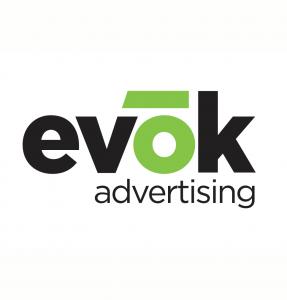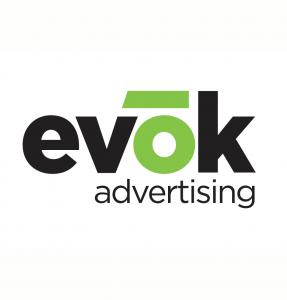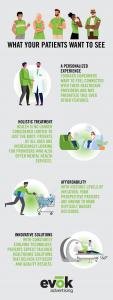Evok Advertising logo 2023 Healthcare Marketing Trends Infographic Stay updated with rising trends and all the changes coming to the healthcare indus
Stay updated with rising trends and all the changes coming to the healthcare industry, and learn how you can stay ahead of the competition in 2023.
LAKE MARY, FLORIDA, UNITED STATES, February 20, 2023 /EINPresswire.com/ — There are more resources available to healthcare consumers than ever, which can be a positive and a negative for healthcare providers. Most consumers still find their doctors trustworthy, but there is a disconnect about whether the system is trustworthy overall. As more avenues of health-related information emerge and gain credibility, healthcare providers will have to work harder to regain the status as a pillar of trust, reliability, and expertise within their field. Keep reading to learn more about the evolving digital landscape and how your practice can use healthcare marketing trends to remain relevant in a world where patients are diagnosing themselves with web searches.
ADAPTING TO A NEW FRONTIER OF HEALTHCARE
Like any other sphere of influence and change, there is a crossroad where human activity blends with the digital universe. The healthcare industry is no exception to the digital dynamics of our age, and trusted third-party information can help raise awareness of healthcare’s vulnerabilities and opportunities through effective communication and outreach to a generation who’s first instinct when they have a question is to turn to Google. These expanded resources aren’t a replacement for the human element of healthcare, rather they are a useful supplement that can help you better serve your consumers.
PATIENTS WANT A TAILORED HEALTHCARE EXPERIENCE
A one-size-fits-all approach to patient care no longer meets consumer needs — when building the ideal non-emergency healthcare experience, providers can no longer afford to copy and paste their methods to every patient. While older consumers, who are much more comfortable with traditional in-office care, tend to prefer an in-office experience, younger consumers are less concerned with face-to-face appointments and short wait times. Instead, they prioritize connecting with their healthcare providers to make concrete lifestyle changes to improve their overall health. Younger consumers have also come to expect the ease and convenience of digital communications to keep track of their health goals.
We asked our friend and healthcare industry professional at T Clinics USA, Jeremy Avner, for his input on what patients are looking for out of their healthcare experience and how his team has seen results from the digital scape. Here’s what he shared:
“In our practice, treatment personalization is key. When we realized we could use emerging digital systems to tailor our patients’ experiences beyond the time they spend in our office, we jumped at the opportunity to make them feel even more valued and like they’re being given the tools they need to succeed in their health journey.”
CONSUMERS ARE TAKING A MORE HOLISTIC HEALTHCARE APPROACH
Like many young people, Millennials are looking at their health and wellness more holistically and are increasingly turning to alternative health care providers for mental health treatment. Baby Boomers are also making efforts to improve their mental health, but less than half have sought mental health treatment and a majority do not have consistent routines for self-care. Moving forward, providers need to optimize their in-person and virtual services, so they cater to people’s desire for improved mental health in their daily lives while making it more accessible to older generations who haven’t considered this an essential wellness aspect in the past.
AFFORDABILITY IS KEY
While healthcare tends to be resistant to economic pressures more so than other service sectors, consumers who are struggling with historic levels of inflation and decreased spending power may have to choose between receiving healthcare and paying for necessary expenditures such as food and housing. The good news is that there has been new legislation that has been recently passed to address the affordability and accessibility of healthcare, which affects low income and elderly consumers the most.
HEALTHCARE PROVIDERS WHO LOOK AHEAD CAN STAY AHEAD
The healthcare industry certainly has its share of adversities, but there are steps providers, and the industry can take to overcome these challenges. Healthcare-focused technology companies are offering innovative solutions to help healthcare professionals build trust with patients and deliver quality services. Technologies such as telehealth appointments or data-driven programs that help patients understand the risks associated with certain conditions can be leveraged to improve health outcomes. The healthcare industry should focus on taking cues from government organizations such as the Centers for Disease Control (CDC). Providers and healthcare companies who work closely with patients need to put more effort into taking advantage of digital channels like mobile apps and internet-enabled devices to extend their reach to a more diverse audience.
Larry Meador
Evok Advertising
+1 407-302-4416
email us here
Visit us on social media:
Facebook
Twitter
LinkedIn
Instagram
YouTube
![]()


